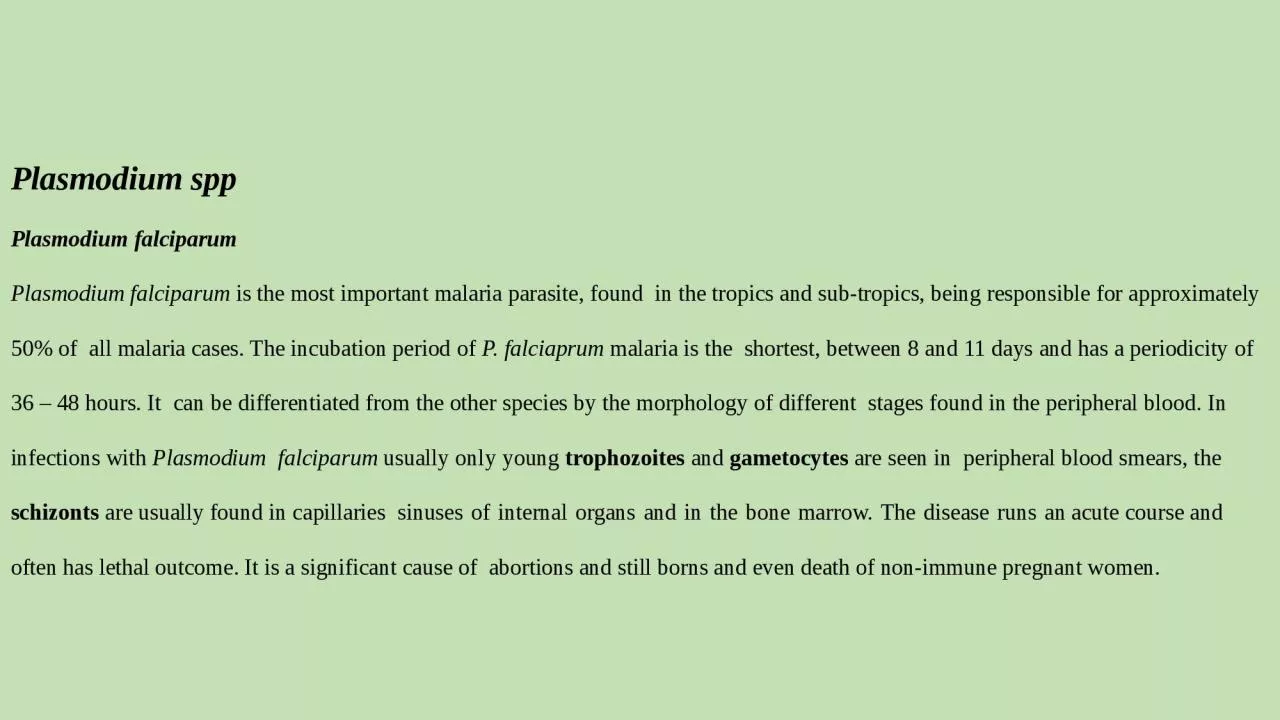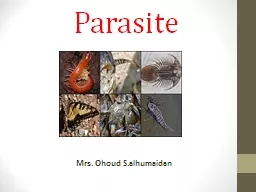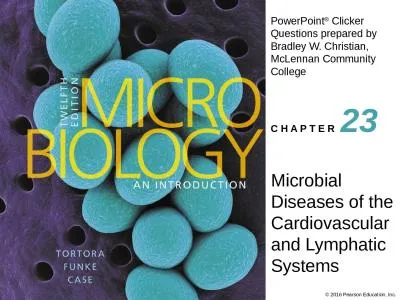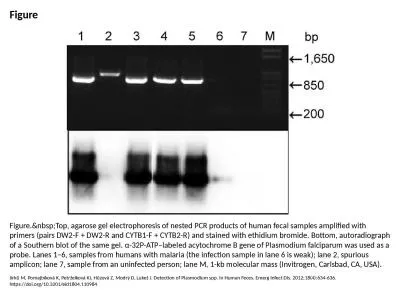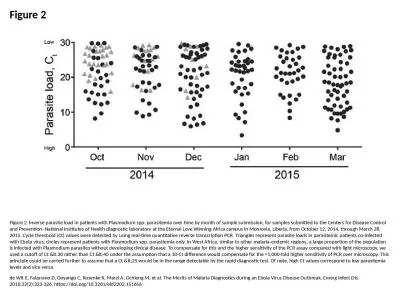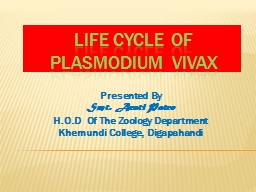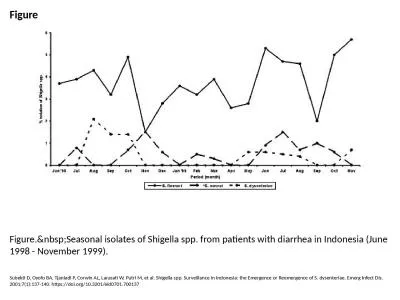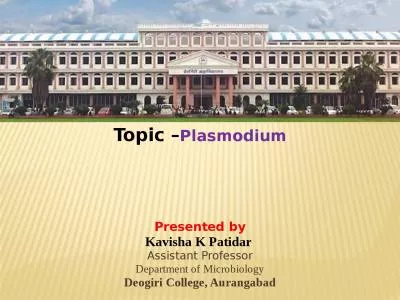PPT-Plasmodium spp Plasmodium
Author : sadie | Published Date : 2024-03-13
falciparum Plasmodium falciparum is the most important malaria parasite found in the tropics and subtropics being responsible for approximately 50 of
Presentation Embed Code
Download Presentation
Download Presentation The PPT/PDF document "Plasmodium spp Plasmodium" is the property of its rightful owner. Permission is granted to download and print the materials on this website for personal, non-commercial use only, and to display it on your personal computer provided you do not modify the materials and that you retain all copyright notices contained in the materials. By downloading content from our website, you accept the terms of this agreement.
Plasmodium spp Plasmodium: Transcript
Download Rules Of Document
"Plasmodium spp Plasmodium"The content belongs to its owner. You may download and print it for personal use, without modification, and keep all copyright notices. By downloading, you agree to these terms.
Related Documents

